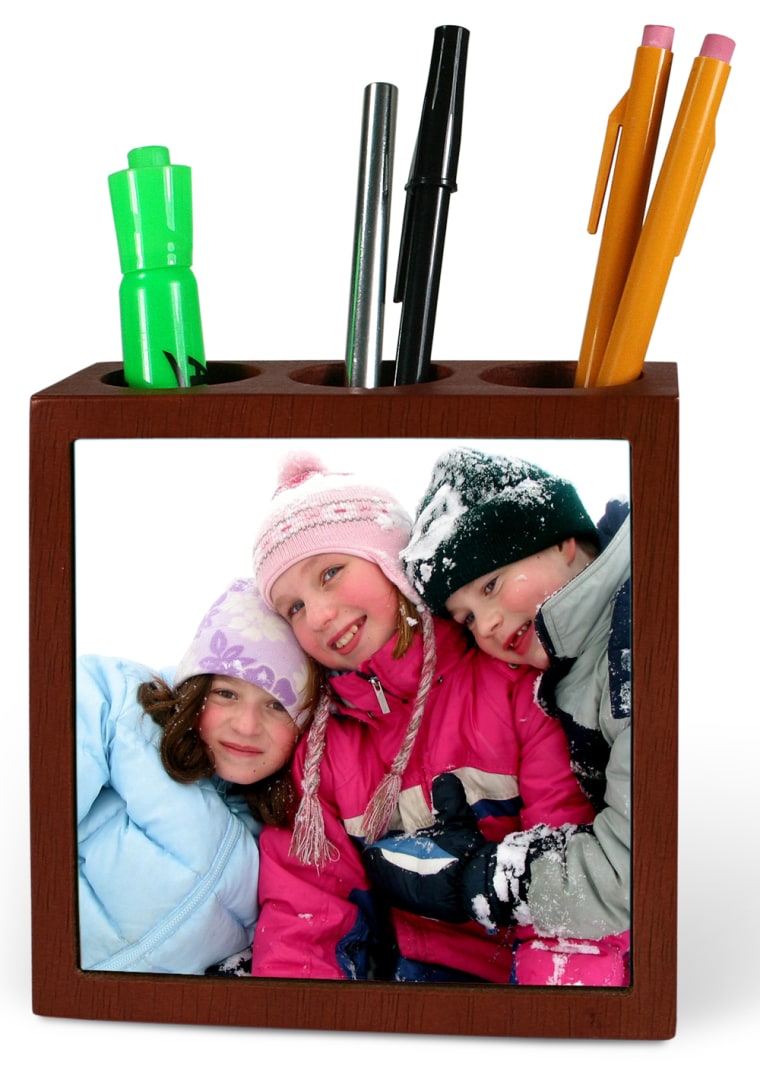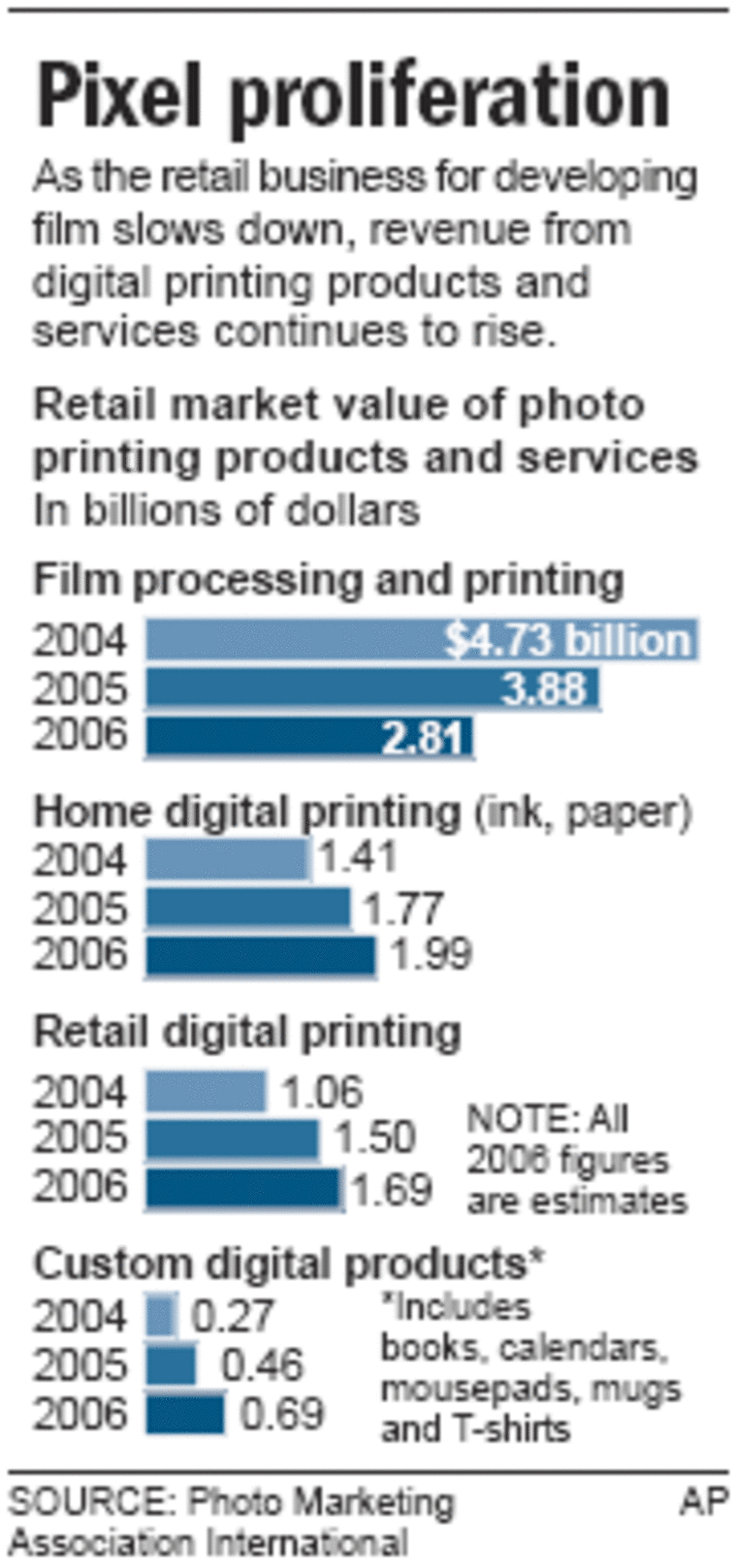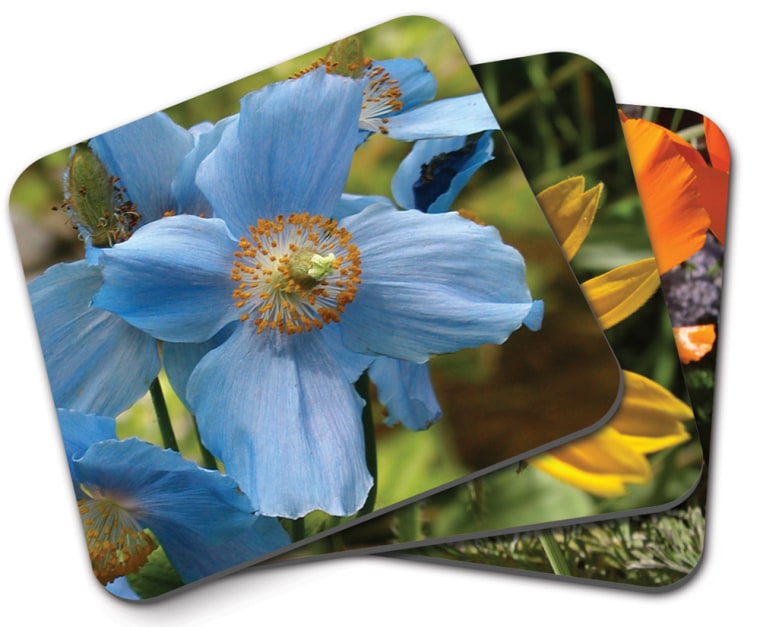More Americans than ever are wearing their photographs. Or eating them. Or showcasing them on calendars, greeting cards and china plates.
In the versatile digital age, picture-bearing merchandise is a booming segment of the photo printing market — and a lucrative one, too. Now the mostly online arena appears poised to gravitate big-time to the corner pharmacy.
Scores of online players, led by Shutterfly Inc., Eastman Kodak Co.’s KodakGallery.com and Hewlett-Packard Co.’s Snapfish.com, tout a variety of photo novelties, from laser-etched crystal ornaments to personalized postcards, key rings, T-shirts, purses, mugs, mousepads, birthday cakes and lollipops.
Kodak and Japan’s Fujifilm Holdings Corp., which divided up the traditional film market, are unveiling new technologies and partnerships designed to counter eroding profits from film processing by reeling in custom-photo customers via retail channels.
U.S. sales in the specialty market — counting online and retail — jumped 50 percent to an estimated $694 million in 2006 from $461 million in 2005 and could reach $951 million this year and $1.2 billion in 2008, according to Photo Marketing Association International, a trade group whose annual convention opens Thursday in Las Vegas.
“The photo industry is desperately looking for ways to replace the money lost to lower volumes and lower prices for basic 4-by-6-inch prints,” said Alan Bullock, a consumer-imaging analyst at InfoTrends Inc.
“There’s a whole slew of products out there generating higher margins than 4-by-6 prints ever did. When people see one for the first time, they go, ’Wow, that’s really cool!' "

The swift transition to a world without film triggered a slide in the overall number of snapshots converted into prints.
Digital and film images ordered from retailers and Web sites or made at home fell from a peak of 30.3 billion in 2000 to 26.6 billion in 2006 and could bottom out at around 22.5 billion by 2009, predicted Dimitrios Delis, research director at the Jackson, Mich.-based Photo Marketing Association.
But the blossoming of often pricey alternatives, from photo apparel to putting computer reproductions of images onto posters, Jacuzzi tiles, furniture and tombstones, drove an 11 percent jump in overall revenues from $9.9 billion in 2005 to $11.1 billion in 2006, Delis said. The latest number includes $6.7 billion in sales of digital cameras, which analysts say have landed in almost 60 percent of America’s 110 million households.
Prices run from $13.99 for a photo mug, $39.99 for a 20-picture photo book and $34.99 for a teddy bear wearing a custom-photo sweat shirt to $49.99 for a sterling necklace containing a picture of a loved one.
Redwood City, Calif.-based Shutterfly, which generated $40 million in fourth-quarter sales of personalized products such as photo-adorned necklaces and handbags, is the biggest online player with a 25 percent share, said analyst Chris Chute of IDC Corp.
Its most popular holiday item was a photo collage card that can carry up to nine pictures.
“We sold tens and tens of millions of them,” said Chief Executive Jeffrey Housenbold, boasting gross profit margins of over 50 percent. “We give away most of our services and we make money when people print. There’s a big trend that people don’t want to just have the same generic jewelry or the same generic card.

“There’s just inherent limitations as to what you can do in retail,” Housenbold added. “You don’t have the creative choices, the high-quality user experience. And you don’t have the time or the convenience when you’re in retail.”
Kodak, which has more than 75,000 photo kiosks installed at retail businesses worldwide, is hoping to solve that. In May, it will offer free software to enable shutterbugs to design photo books, mugs and other custom items at home that can then be produced at retail stores in hours — rather than days when ordering online.
“Eighty percent of all images reside on the home PC,” said Brad Kruchten, general manager of Kodak’s retail printing business. “You want this to be an enjoyable process, so doing it in your home is, we believe, a better alternative than standing in the aisle.”
Until recently, the only method for making photo books at retail outlets has been through HP’s self-service PhotoSmart Studio system. The Palo Alto, Calif.-based computer and printer company is now testing new models for small-to-medium-volume stores that allow customers to quickly create albums, cards, calendars or posters.
Fuji, which delivers digital prints solely through retailers, is putting Xerox Corp.’s high-quality Phaser 7760 printers in Wal-Mart Stores Inc., Walgreen Co. and other chains to allow customers to make their own creations at store kiosks. The machines can be equipped with spiral binding for calendars and hardcover binding for photo books.
“Every day that goes by, there’s another application of how you can use your image in some type of other product. It’s absolutely limitless,” said Bing Liem, a senior vice president of sales at Fujifilm USA.
“When all is said and done, photo specialty products ... may represent 25 to 30 percent of the market. For the health of the entire industry, it’s a very good thing. They’re exciting, they’re sexy, they’re fun.”
